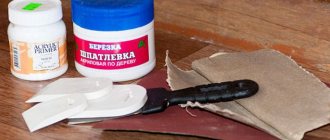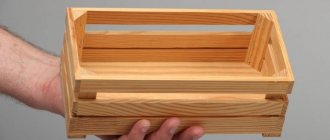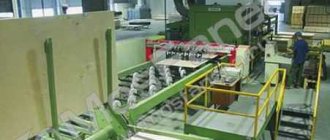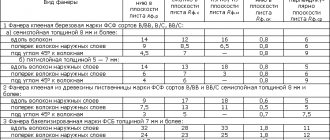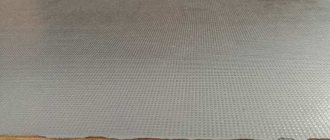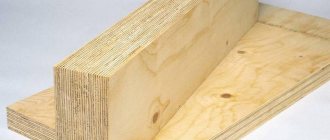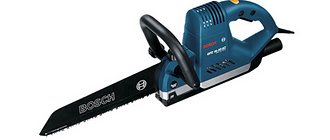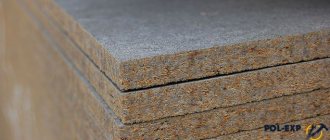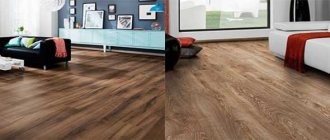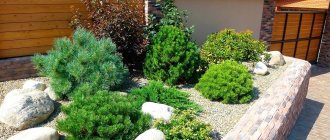Medium Density Fiberboard (MDF) began to be produced on an industrial basis in the USA in 1966; in our country, the technology appeared only in 1997, the boards were called MDF. The name stands for medium density fibreboard.
What is MDF in furniture
At the experimental level, the American William Mason tried to create the first slabs in 1924; he found a way to process waste from the woodworking industry, separated them into individual fibers with a Mason gun and sent them for pressing.
General information about MDF
MDF is a material that has a wood structure.
MDF is a medium density pressed sheet with a wood fiber structure. They were first heard of in the United States of America in 1966. In Sweden, the technology was improved. Innovative developments in building materials came to Russia only in 1997. The first plant was opened in the village of Sheksna, Vologda Region. The board did not immediately gain popularity, but thanks to its advantages, it gradually began to replace the previously common chipboard.
Main features
The uniqueness of the pressed canvas is its similarity to natural wood and ease of manufacture. Panels are created from shavings, just like chipboard, but unlike the latter, the mass is highly crushed and heated.
As a result of this innovation, natural glue is released from the wood, which makes the material safe for health. A special production method gives the product strength, it does not crumble when drilled, and lends itself to any carpentry interventions (complex carving, sawing).
Decoding the abbreviation
MDF is the Russian equivalent of the American abbreviation. In English the name sounds like medium density fiberboard. Literally translated, it means medium-density fiber board.
MDF is a medium density fiberboard.
Properties
Thanks to innovative production technology, the fine particle board differs in its characteristics from its closest competitors: chipboard and fiberboard. Basic indicators:
- strength – withstands loads without traces of deformation, similar to wooden structures;
- moisture resistance – permissible operating conditions at air humidity up to 80%;
- biostability – not susceptible to mold, bacteria, fungi;
- environmental friendliness - non-toxic additives are used in production, the product is marked E1, safe for use in residential premises;
- uniformity - without defects;
- heat resistance – does not deform under the influence of temperature changes;
- insulating properties - does not allow sounds to pass through;
- manufacturability - lends itself to any tools, is easy to glue, paint or varnish.
Advantages
High performance characteristics give MDF sheets valuable properties:
- safe in the children's room, kitchen and bathroom;
- suitable for creating complex structures of non-standard shape;
- used on curved surfaces;
- do not require preliminary leveling before painting and decorating;
- suitable for floors, ceilings, walls;
- hold fittings and fasteners well;
- do not require special skills during installation;
- Easily interchangeable if damaged.
MDF sheets are safe in a child's room.
Among the advantages of pressed fiber boards are a low price compared to natural wood, a long service life and a large selection of decorative options.
What sizes are MDF panels?
MDF panels are available in various sizes. In stores and construction markets, panels are offered with a length of 900-3600 mm, a width of 150-2070 mm, and a thickness of 2-60 mm. Standard parts are 2600 mm long, 900 mm wide, and 30 mm thick. The thickest ones are veneered; they can be used not only for decorative purposes, but also as insulation. Wide parts have the best aesthetic properties, since there are a minimum number of seams on such a wall.
More affordable compared to solid wood products. No costs required throughout the entire service life.
Tip: parameters vary among most manufacturers, but cutting to the required sizes is usually ordered at the point of sale.
Specifications
Physico-mechanical properties of wood fiber fabric:
- The density of the finished product is in the range of 600-980 kg/m3.
- Withstands mechanical stress during bending of 17-23 MPa, during tension - 0.50-0.65 MPa.
- Within 24 hours, it withstands swelling by 17% at a sheet thickness of 6-9 mm, and no more than 8% at 30-45 mm.
- The elastic modulus is 1700 mPa.
Compound
The main component of MDF is wood fibers, the content of which is 82%. Urea-formaldehyde resins act as a binder - 9%. Water accounts for 8% and 1% is paraffin, which gives water-repellent properties to the finished product.
Wood fibers are the main component of MDF.
Dimensions
In construction and furniture production, slabs of various sizes are used:
- thickness, mm – 3, 4, 6, 10, 16, 18, 24, 30;
- length and width – 2070x2800 mm, 1830x2440 mm, 2070x2620 mm.
At the same time, moisture-resistant panels have a standard size of 1220x2400 mm, and laminated sheets, embossed, perforated and imitating stone - 2070x2800 mm.
Permissible deviation in width and length is ± 5 mm, in thickness ± 0.2 mm. The deviation from the straightness of the edges should not be more than 0.2 cm.
What are MDF panels
To the question: “What is it – MDF panels?”, experts answer – medium-density fiber boards. The material has a thickness of three to six mm, consists of very small shavings, sawdust, “bound” using modified urea resins and lignin. From such wood waste, sheets, long narrow panels, and rectangular tiles are created using the dry pressing method. The product is covered with a film on top, most often imitating the texture of wood. MDF can be painted; it is covered with veneer of valuable and ordinary wood species, making it practically indistinguishable from real wood in appearance.
MDF (fine fraction) is made from tiny wood particles that are formed into a board by pressing.
Production technology
In the manufacture of MDF, both solid logs and waste from the woodworking industry are used.
- For the production of slabs, highly crushed sawdust is used, which is obtained by cutting pre-cleaned logs. The resulting fraction is cleaned of foreign inclusions, treated with hot steam and fed into the refiner.
- During the process, wood pulp releases a binding agent - lignin, which ensures good adhesion of the fibers. Depending on the quality of the source material, resins and paraffin are added to the mixture, and in some technologies a hardener is added.
- The resulting mass is sent for drying, where excess moisture is removed. Then a forming and pre-pressing process occurs, which removes air and creates a complete web.
- At the main stage, pressing, the thickness of the slab is adjusted to the required value, cut and left to cool.
- During the grinding process, the material acquires its final consumer appearance, unevenness and roughness are smoothed out, and if necessary, it is veneered, painted or laminated.
Sawdust is used to produce MDF.
FAQ
Is it possible to cover MDF walls on a balcony with cold glazing?
It is possible if the humidity level does not exceed 80%. It is better to choose moisture-resistant material.
I want to cover a country house with MDF panels that is not used in winter. Will there be any problems with the material?
If the area is not very damp, high-quality air exchange is organized in the rooms and MDF is mounted on clamps, there will be no problems.
I decorated the walls in the apartment with MDF panels, but after 3 months they came in waves. What is the reason and how to fix it?
Incorrect installation. The panels cannot be mounted close to each other (tenon/groove connection). Each successive panel should not be inserted into the groove of the previous one all the way. The gap should be about 1 cm. Then it is closed with a folding strip. Only in this case the panels will not move even in the presence of significant humidity. Try reducing the distance between the base joists by first removing the panels and stacking them to straighten them.
We bought MDF, but after removing the packaging a strong smell was discovered. Is it possible to use such material, how long will it take for the smell to dissipate?
This can happen for years. But the smell isn't the worst thing. It may indicate the presence of formaldehyde and phenol in the panels. MDF if the varnish or resin with which it was glued may contain harmful substances such as phenols or formaldehyde. These substances belong to the second hazard class according to GOST 12.2.007-84. Therefore, it is easier to go to the store and return the low-quality goods. If the seller refuses to accept, contact your city's consumer protection service.
Species diversity
Due to the wide range of applications of MDF, manufacturers produce different types of sheets depending on the shape, production technology, finishing and installation method.
By shape
There are 3 types of products:
- Slatted - an elongated rectangular sheet. It is light in weight, with possible widths from 15 to 32.5 cm, lengths from 240 to 270 cm. The panels are used for wall cladding, so the product has a lock, on which the strength of the structure depends.
- Tile - small tiles of square or rectangular shape. Range of sizes from 30 to 98 cm. Used for wall decoration. Mounted on a frame or hidden fastening system.
- Sheet - large-sized canvas. Used by professionals for construction work or in furniture production.
By processing method
Depending on the manufacturing method, there are:
- solidly pressed - a polished board without a decorative coating, the surface is easy to paint, bends well, used to create furniture of any configuration, arches or when decorating uneven walls;
- decorative - the design has a special device for easy installation, used for cladding walls, less often floors or ceilings;
- moisture resistant - the composition includes substances that give the product special properties that allow the material to be used in rooms with high humidity, for example in bathrooms;
- Kronospan - sheets are distinguished by high density, have high performance characteristics, and are used for decorating floors.
MDF is distinguished by its manufacturing and processing method.
By finishing method
MDF differs in different types of front side finishing.
- Laminated. The surface is covered with a special film of melanin, paper-resin or PVC. It is used in interior decoration and in the creation of furniture, such as kitchen sets. Advantages: large assortment, the film provides additional protection from moisture and temperature exposure. With prolonged exposure to negative factors, it swells and moves away from the canvas.
- Veneered. A thin layer of wood is glued to the front side of the canvas, which gives the surface a natural look. A thin layer of stone chips or polyester resin can be used as veneer. The material resists the negative effects of moisture and temperature and is not afraid of mechanical damage. The service life is not inferior to furniture made of natural wood.
- Cork. The product is covered with a thin layer of cork. The cost of such a plate is high.
- Plastic. A thin layer of plastic is applied to the front side. The advantages of this treatment are the durability of the material, withstands high temperatures, and does not fade under the influence of ultraviolet rays.
- Enameled or acrylic. The base is coated with paint and then varnished. Large selection of colors and types - matte, glossy, glitter, pearlescent. Painted surfaces are resistant to detergents.
- Milled - a relief pattern on the front side is created by pressing, then covered with paint or laminated.
By installation method
Different types of slabs have different installation methods:
- Tile. It is laid in a geometric pattern on a flat wall surface using glue. To fix the panels together, additionally use clamps.
- Lining. The elements are connected using a lock (tongue and groove). Installation is simple and does not require special skills.
- Sheet. The surface is decorated with large canvases that have a holistic pattern. Mounted using decorative seams.
MDF tiles are laid on a flat surface.
Appearance of panels
MDF panels are very popular precisely because of their similarity to natural and more noble finishing materials. At the same time, the cost of such panels is much lower.
The term MDF itself is literally translated from English as the familiar abbreviation chipboard or chipboard, but differs from its Soviet counterpart in improved technical characteristics. In this case, harmful resins containing phenol are not used to connect raw materials. The binder here is lignin, and in some cases paraffin.
The basic composition of the panel contains wood dust, which was obtained after grinding and processing sawdust. This material is heated in special ovens until the binding substance lignin is released from it. It is with the help of such a component that the raw material mass is glued together. The pressing process gives the product even greater strength. The cooled workpiece needs additional processing; first, the released slab is cut into the required parts, then a melamine film is glued to the surface, which imitates the structure of wood.
In structure, MDF lining resembles an intermediate material between cardboard and plywood sheets. Thanks to these properties, the product can be given the required dimensions using a regular hacksaw for this purpose. The material in question has a low thermal conductivity coefficient, but it also has a drawback - the possibility of damage to the melamine film during operation. After mechanical impact, cracks and scratches appear on the surface of the material, but defective areas can be easily masked using ordinary paint.
Areas of use
The advantages of fibreboards are used in the production of furniture (tables, sets, sofas, etc.) and during construction work:
- decorating walls and ceilings;
- creating partitions;
- production of interior doors;
- decoration of ceilings;
- formation of the subfloor;
- roof sheathing, etc.
Facades
Kitchen facades made of MDF are popular in Russia and other countries. Thanks to different methods of processing the material, you can choose an individual decor:
- figured;
- bent;
- with convex elements;
- painted;
- with frames.
Kitchen facades made of MDF are popular in Russia.
Frame facades are complemented with inserts, which are used as glass, fabric, MDF with another type of coating.
Apron
To protect the wall in the kitchen from moisture, grease and temperature, you need a material that has:
- resistance to mechanical damage;
- moisture resistance;
- ease of installation;
- easy care.
MDF has all the necessary properties, at the same time it is low in cost and resistant to mold and mildew. There is a large selection of design solutions for the kitchen. When installing the panel, the ends should be covered with aluminum or plastic profiles. The stove must be protected from any mechanical damage.
Tabletop
This MDF element is an inexpensive way to create a beautiful and functional interior. Working with a knife should be carried out on a special board. A large selection of products allows you to make any style: high-tech, art deco, modern, etc.
A large selection of countertops allows you to create a beautiful interior.
Doors
More and more door manufacturers are choosing wood fiber sheets. The advantages include low weight, ease of manufacture (the material does not crumble), impact resistance, resistance to high humidity, does not deform from temperature changes, absorbs sounds, long service life, and a large selection of design options.
Ceiling
Suitable where there are large uneven areas or where communication lines need to be hidden. To attach the panels, a special frame is first installed, as for drywall.
Among the advantages of the canvas are good sound insulation, are not subject to rotting, ease of maintenance, and long service life.
Windowsill
An MDF window sill can be made of any color and texture, the surface can be matte or glossy. The material should be selected with a thickness of at least 22 mm. The negative side of the product is that it is afraid of mechanical damage.
An MDF window sill is afraid of mechanical damage.
Wall panels
Thanks to its simple installation, it has become popular to use pressed lining for wall decoration. In addition, manufacturers offer a large selection of panels to suit any interior.
In case of mechanical damage, you can easily replace the damaged element with a new one. MDF additionally insulates the room from noise and temperature changes.
Selection criteria: what to look for
The choice of fabric depends on the conditions in which it will be used: temperature, humidity, exposure to sunlight, the possibility of mechanical damage, loads.
For exterior decoration or bathrooms, moisture-resistant sheets should be considered - laminated sheets are good. When tiling interior spaces, pay attention to the sound insulation indicator - there is a large selection of colors and textures. An important feature of the environmental friendliness and safety of wood fiber boards for living rooms, especially for children’s rooms, is the formaldehyde emission class E-1.
To choose high-quality MDF, follow simple recommendations:
- buy building materials in large stores with a good reputation;
- read the quality certificate for the product;
- Carry out an external assessment of the canvas - check for chips, roughness, and uniform coloring.
The choice of fabric depends on temperature and humidity.
MDF panels in the interior of different rooms
The choice of shape, mounting method and style of material depends on the size and design of the room.
The following finishing options exist:
- Bedroom. Slabs of medium size and muted tones are selected. The best solution would be to use wood imitation material. Relief masonry will help create an atmosphere of comfort and coziness.
- Kitchen. Glossy wall panels visually enlarge the room, making it lighter and taller. Laminated and varnished coatings are easy to clean from grease deposits, do not absorb moisture and look attractive.
- Children's room. The best choice would be longitudinal panels glued to the wall. The child will not get hurt on their surface or break them during outdoor games.
- Living room. The venue for special events should be decorated catchily and elegantly. The best choice would be to use standard products covered with film, depicting brickwork, torn stone or wood cuts.
- Closed balcony and loggia. If these rooms are not used for living, you can choose standard slats covered with colored paper to decorate them.
- Corridor. Since this room is a walk-through room, and the walls are exposed to drops from wet clothes and umbrellas, it is better to stick pressed laminated strips. The color should be calm with a neutral theme.
Popular manufacturing companies
The reputation of a company engaged in the production of building boards is influenced by the quality of products, their range, compliance with international standards, compliance with environmental standards, and the use of innovative technologies. Popular companies include:
- Austrian company Egger. Offers more than 230 types of various decor, incl. stylization of natural marble and other rocks, as well as 12 shades of white.
- Swiss concern SWISS KRONO. It has production facilities in different countries, incl. Russia. The color range of design solutions has more than 170 types.
- Belgian company Spanolux. It produces slabs for various purposes and compositions (fire-resistant, moisture-resistant, lightweight, etc.). Cladding is carried out at the customer's choice.
- Austrian company Kronospan. Manufactures products for furniture factories, construction and finishing works.
- Russian holding Soyuz. It has 2 directions: for furniture production and creation of decorative finishing of premises. Cheaper than European analogues.
- Russian enterprise Kastamonu. The plant has a full production cycle, which reduces the cost of the final product.
Installation methods
Installation of panels does not require special skills. Installation conditions depend only on the method of its implementation.
On the frame
The frame method is used for large uneven walls; in wet rooms, galvanized guides should be chosen. This method allows for additional insulation and soundproofing of the room.
Frame mounting is used for uneven walls.
On glue
Installation using glue is carried out in rooms where space needs to be preserved. It is first necessary to level the surface, remove roughness, and seal cracks. After preparation, the wall is treated with a primer. Then glue is applied pointwise to the back side of the tile.
The panel with the composition is placed on the wall and held for several seconds, pressed tightly to the surface.
Preliminary preparation of walls
Before directly installing the panels on the wall, it must be prepared.
The wall must be flat so that the MDF sheet does not deform. Also, the room must dry well, otherwise the sheet placed on the glue will come off over time.
To prepare the wall for installing the panels, you will need the following materials:
- special thin jigsaw for laminate;
- several spatulas, one serrated and the other regular;
- meter;
- sealant for sealing joints and a gun for it;
Sealant and gun for it
- liquid Nails;
Liquid Nails
- to treat the wall you will need a primer;
- panel glue;
- decorative fittings to give an aesthetic appearance to the finished finish.
Once all the necessary tools have been collected, we proceed directly to preparing the wall. The first step is to clean the surface, removing the old layer of finishing.
Surface cleaning
The wall is covered with a layer of primer to smooth out any existing irregularities.
Primer
Before installation, the panels themselves are brought into the room several days before actual installation. In this way, the building material gets used to future operating conditions. As soon as the preparation of the room is completed, the stage of installing MDF sheet panels on the wall begins.
Step-by-step instruction
Installation of sheets is glue-based and does not require much time. Cladding walls onto a frame is a more labor-intensive process, but even an inexperienced craftsman can handle it by following simple recommendations.
Preparatory activities
Before installation on the frame, a special structure must be installed. The lathing is made of a metal profile or wooden beam (side length 30 mm and humidity no more than 15%). Before installation, the wood is treated with a bioprotective impregnation.
To carry out the work you will need the following tools: tape measure, level, electric jigsaw or hacksaw, screwdriver, hammer or stapler.
To carry out the work you will need an electric jigsaw.
Installation of guides depends on the location of the panels. In the case of vertical installation, the sheathing elements are attached horizontally to the wall, i.e. perpendicular to the canvas. In other orientations, the installation is carried out in reverse.
Execution of work
Work order.
- Measuring and marking the wall (distance between guides 50-60 cm).
- Attaching the profile to the surface. The first rail is installed at the junction of 2 walls. It is attached to a concrete or brick surface using dowels, and to a wooden surface with self-tapping screws.
- Between the frame elements, additional wall insulation is made, for example, mineral wool is laid.
- The starting panel is mounted in a corner and secured with self-tapping screws to the guide. On the opposite side, clamps are inserted into the groove at the intersection with the slats and secured with nails or staples.
- The tenon of the next lining is driven into the groove of the previous one and fixed with clamps.
- The last sheet is cut so that it fits freely into the groove of the previous one and there is a gap of 5 mm to the wall. Complete the fixation with a self-tapping screw.
How to choose quality panels
When selecting MDF panels, the first thing to evaluate is their appearance, that is, the texture of the front surface and its compliance with the intended design.
Then the following characteristics are taken into account:
- Thickness _ Panels up to 12 mm perform a purely decorative function. If the purpose of the finishing is additional sound and heat insulation, you should choose a thicker material.
- No defects . You need to check the outside and edges of the products. You cannot purchase items with cracks, unevenness or chips, even if the seller gives the maximum discount on them.
- Color uniformity . An uneven shade on the outside is a defect.
Expert opinion
Mezentsev Sergey Petrovich
Residential renovation and finishing specialist
Important! When purchasing, make sure you have a quality certificate. The document must reflect information about the composition of the material. The presence of formaldehyde and toxic resin in the panels, which can cause harm to health, is unacceptable.
Nuances of caring for panels
No special measures are required to keep MDF clean - just wipe the surface with a cloth.
It is enough to wipe MDF products with a cloth.
Basic recommendations:
- Do not clean dirt by scraping;
- use only soapy water;
- Do not wipe with solutions containing chlorine and acid;
- polish using special products containing wax and silicone.
Advantages and disadvantages of MDF
Advantages of MDF. The advantages of fiberboards include:
- Moisture resistance. The slabs are characterized by increased density and uniformity due to compressed wood fibers. The presence of lamination, veneer or a decorative layer of paint increases the performance characteristics of the product. As a result, it is not afraid of water and can be wiped with a damp cloth. However, even with additional finishing, manufacturers do not recommend using MDF in rooms where there is a constant high level of humidity. In this case, waterproof slab models are purchased.
- Strength. Modern MDF products are comparable in strength to ordinary wood, and their properties are better than chipboard. The characteristics acquired during the production process allow the slabs to be used to create decorative and functional products.
- Affordable price. As mentioned above, MDF is practically no different from natural wood, but the price of the panels is much lower. Thus, laminated MDF boards 16 mm thick will cost the buyer about 300 rubles. per m2.
- Long service life. Due to the fact that the panels are able to withstand sudden temperature changes, they do not deform or break. Additional impregnation with special compounds allows you to avoid the appearance of fungus, mold, and damage to the product by insects or rodents. MDF does not require regular maintenance - painting or varnishing. If the owner follows the manufacturer's recommendations when using items made from fiberboard, they will last more than 10 years.
- Wide possibilities for decoration. There are already many ways to finish MDF, and combining them is acceptable. All this allows you to create not only functional objects, but also visually attractive and even unusual ones.
- Ease of operation. When making products from MDF or installing boards, there is no need to have special education or expensive tools. If during assembly or operation one of the fragments is damaged, it is easy to replace it, since the panels are supplied in standard sizes.
- Possibility of creating relief. MDF is quite smooth and dense, which allows for additional milling to obtain the desired pattern.
Disadvantages of fiberboard:
- Product weight. With the same dimensions of wood and MDF, the latter will be much heavier.
- Dust during processing. It is impossible to saw or sand a slab without causing a lot of debris and dust. It is recommended to wear a respirator.
- Difficulty in working with fasteners. If you need to drive a nail or screw a screw into a slab, you will first have to drill a hole, and only then take on other building materials.
- Low load-bearing strength. Assembling tall vertical structures from MDF would be a bad idea, since during operation they are unreliable and can collapse under their own weight.
- Low environmental safety indicators. MDF manufacturers often claim that their products do not emit toxic substances and are completely harmless. Such statements about complete environmental friendliness are somewhat exaggerated. In reality, the emission class of the boards is low and close to natural wood, but the emission of formaldehyde cannot be denied.
Comparison with other materials
When choosing a construction product, it is important to compare all the indicators and pay attention to the advantages and disadvantages of each.
With natural wood
Solid wood is inferior only in terms of environmental friendliness; otherwise, pressed wood has better characteristics:
- the density is the same over all surfaces of the sheet;
- there are no wood defects - knots, microcracks, voids;
- Lego lends itself to fine carpentry;
- resistant to mold, fungi, etc.;
- withstands temperature changes and humidity;
- large selection of finishes;
- the cost is 60% lower.
Natural wood is inferior in environmental friendliness.
With plywood
Plywood is stronger and lighter, but wood fiber has its advantages:
- smooth surface of the sheet without deviations in width and length;
- not afraid of water vapor;
- easier to process;
- cheaper.
With fiberboard
Fibreboard has a similar manufacturing method: one side of the material is smooth, and the other has a rough surface. The products have similar characteristics, but the cost of fiberboard is less.
Fiberboard has a rough surface.
With laminated chipboard
Laminated chipboard is an inexpensive, beautiful product, but inferior to MDF in a number of ways:
- formaldehyde resins are used in production, which is environmentally friendly;
- less durable, prone to chipping;
- short shelf life;
- cannot be milled;
- demanding to changes in humidity.
Negative sides of MDF
Wood fiber products have their disadvantages:
- if the edges are left untreated, they will absorb moisture, which will lead to deformation of the canvas;
- burns well, so should be installed away from heating elements;
- low strength of thin sheets; with a strong impact, the panel may burst.
However, the negative aspects are not critical and can be easily mitigated. Therefore, Medium Density Fiberboard remains one of the most sought-after and popular in the construction products market.
Standard panel colors. Texture
Thanks to modern technologies, you can choose the shade of MDF panels to suit any interior design. In particular, on the market there are textures like stone, natural wood, imitation metal surfaces, copper, silver and mother-of-pearl.
However, the most recognized are the standard MDF colors that imitate solid wood. Here you can select the following colors:
- Apple tree
- Nut
- Ash
- Cedar
- Bleached oak
- Cherry
- Ash
Such panels accurately imitate wood and are suitable for finishing any interior space.
